What Is Trunnion Ball Valve
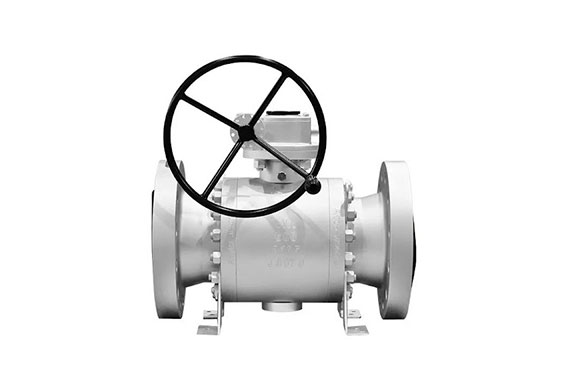
A crucial tool for controlling the flow of liquids, gas, steam, or oil in a pipeline is the Trunnion ball valve. The device has a quarter-turn design with a ball that can bend 90 degrees to obstruct or permit liquid flow. To control the begin-halt flow cycle, these valves have a spherical disc design in the middle that revolves.
The disc, which is frequently referred to as a ball, is made with a thin, mechanically supported shaft projecting from the top and bottom. The location of a hole in the middle of the ball regulates flow. Trunnion mounted ball valves are helpful in applications where shut-off function is necessary because of their adaptability.
The support for the ball in the Trunnion ball valves is sufficient. The support, which resembles a shaft in shape, is known as a trunnion. The Trunnion absorbs any extra pressure created by the flow, reducing the pressure on the seat of the valve and ball. Ball valves placed on Trunnion are employed in large-scale applications mandating little operating torque.
Parts Of A Trunnion Ball Valve
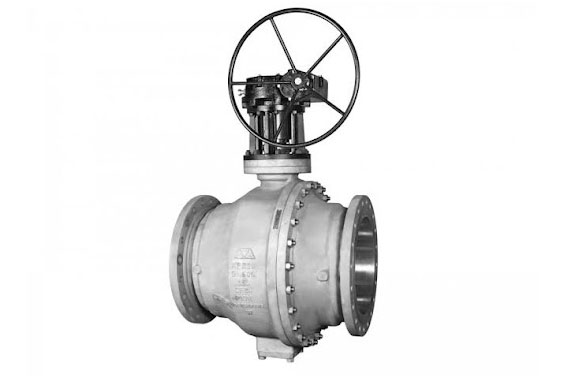
The Trunnion-mounted ball valves resemble the common ball valves in terms of structure. The design of the trunnion-mounted ball valve features mechanically supported, gloomy tended shafts at its top and bottom. This enables it to be utilized at high pressures and massive diameters.
Different types of Trunnion ball valves are produced, and you can acquire them from a reliable valve manufacturer in china. The seat rings at the two extremities of the Trunnion design are condensed to keep the ball in place. Here are the different parts of Trunnion ball valves.
- Body
The ball valve’s body is the casing that supports the inside of the valve and keeps it in place. Based on the function it will receive, the substance for this design may be constructed of various products. Carbon steel, stainless steel, duplex, low-temperature carbon steel, Inconel, and super duplex are a few of the materials that are frequently utilized.
- Ball
It rotates through a disc with a sphere-like form to halt or start flow in a steady rotation. On one end, it is attached to the Trunnion, and on the other, to the stem. While it takes turns, the ball is secured in place. The seats of the Trunnion ball valve frequently get into touch with this ball, lowering the torque.
- Seat
The Trunnion ball valve’s seat is a design element that encircles the ball. The seats hold the ball firmly in place when the actuator is switched on, preventing access. There are two varieties: soft and metal, which causes it to move in the ball’s general direction.
- Trunnion
The trunnion ball valve has an additional shaft that holds the ball in place from below, which is called Trunnion. Its purpose is to maintain the ball’s tight attachment. In some Trunnion mounted ball valves, the Trunnion is an attachment of the spherical ball, and the rest of the time, it is connected to the spherical ball disc through welded joints.
- Stem
The ball and the actuator are connected by the trunnion ball valve’s stem. It is attached to the ball by an extra shaft, which aids in keeping the ball firmly in position. Additionally, it controls how the ball moves. Trunnion-mounted ball valves retain stronger anti-blowout stems, which allows them to withstand high pressures and temperatures without suffering any harm.
- Disk
A perforated, solid ball is the shape of the disc in a Trunnion ball valve. The ball is attached to the stem on one side, and on the other, to the Trunnion. The ball or disc in a Trunnion ball valve is stabilized while it revolves. Because the seats are always in touch with the ball, torque is decreased.
- Actuator
A trunnion ball valve’s actuator is utilized to open or shut down the valve. Based on the application and medium, like air-operated ball valves, numerous types of actuators are utilized in ball valves. On a valve, typical actuators include bare stems, hand levers, pneumatic actuators, gears, and hydraulic actuators. Additionally, you can utilize a motor-operated actuator, a hydraulic-operated actuator, an electric actuator, a gas actuator, gas-over-oil actuator, and more.
- Injection
In the seat and stem region, injection fittings are created. Grease can be inserted using a sealant injection fitting when sealing is weakened, and leakage starts. A partial seal is created by the injected sealant to halt additional leaking. The sealant injection fittings are only to be utilized in emergencies.
How Do Trunnion Mounted Ball Valves Work?
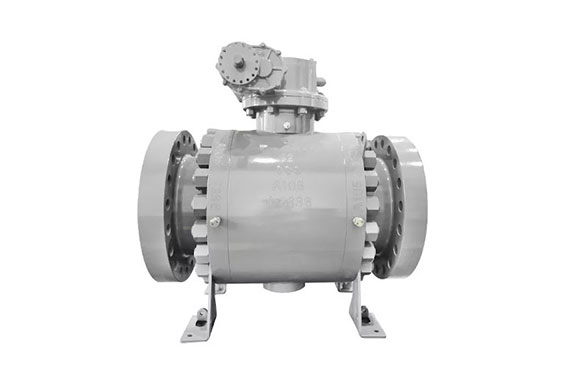
Trunnion ball valves are simply 90-degree turn valves. It implies that to swing the valve on or off, the actuator must be slanted at a 90-degree angle. The ball pivots after the actuator are turned, allowing the medium to flow freely because the bore is towards the pipeline. By turning the handle one more time, the ball is moved so that the bore of the ball meets away from the pipeline, halting the flow.
For instance, you need to control the flow of oil through a crucial procedure component. To complete the task, install a three-piece, split-body, or half-bore ball valve. You must rotate the valve’s actuator 90 degrees in one direction to begin the flow of oil, normally clockwise.
The ball is attached to the valve stem, which is related to the actuator. The ball is also moved by the stem’s rotation, so the side bearing the bore encounters the pipeline. Due to the half-bore valve’s restriction on oil flow, the stream’s flow pressure is reduced.
Rotate the actuator once more to halt the flow, shifting the ball and stem simultaneously. Now that the ball’s bore is turned away from the pipeline and the flow is impeded. The seats of the valve are shoved closer to the ball by the upstream pressure, creating a strict seal.
Even modest pressures can force the seats of a Trunnion-mounted ball valve against the ball because of its spring-loaded design. The oil flow is stopped by this closed seal, which also prohibits oil from penetrating the valve’s interior components.
Trunnion ball valves are employed in high-pressure and low-pressure systems. Click here for more about How do Trunnion Ball Valves Work? The Trunnion absorbs any additional pressure on the seats and ball in high-pressure settings, allowing the valve to retain its torque. The valve’s spring-loaded seats shift toward the ball in low-pressure conditions to create a tight seal.
Pros And Cons Of Trunnion Mounted Ball Valve
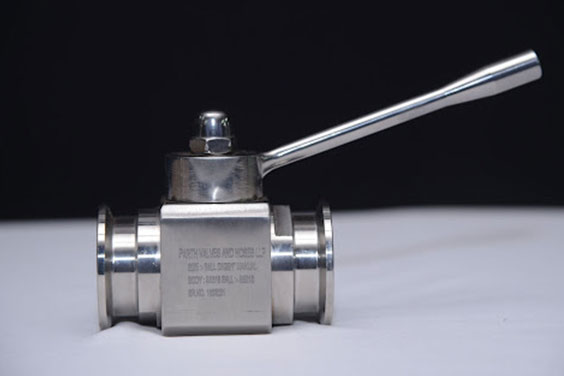
Advantages Of Trunnion Ball Valve
Here are the primary advantages of the Trunnion ball valve.
- Less Torque
A Trunnion, or lower stem, is utilized in a Trunnion ball valve to support the ball inside the valve body. The trunnion stem prevents unreasonable friction between the ball and seats by absorbing the thrust from the line pressure. As a result, even at the maximum working pressure, operational torque is kept to a minimum.
- No Size Limit
Trunnion ball valves come in a wide range of sizes. Large-sized balls can fit into two-piece and three-piece ball valves, making them ideal for bigger applications. Tinier, low-pressure applications can make use of one-unit Trunnion ball valves. These ball valves are appropriate for important applications because they can deal with high-pressure operations.
- Spring-Loaded Seats
Trunnion ball valves have spring-loaded seats. In addition, these Trunnion mounted ball valves are efficient in low and high-pressure conditions. The spring-loaded seats function for high-pressure applications as well as little or no pressure circumstances, forming a seal.
- Customizable Features
They retain a wide range of value-added characteristics. To make the seats and the ball more durable and ensure a tight seal, injections might be utilized. Corrosion-resistant nuts and bearings can be utilized to extend the valve’s life. It is possible to equip massive valves with lifting lugs.
- Self Relief Pressure
The seat is originally electrified by the springs in Trunnion ball valves with cavity relief. However, the primary sealing force is provided by the line pressure disparity between the seat and the cavity. In order for the pressure to pile up and to plug the valve at downward pressure, the springs initiate a seal.
When the cavity pressure and line pressure are equal, the only thing generating the seal is the load provided by the springs, which is all the cavity pressure has to overpower for cavity relief. The valve will always release to the side with low pressure if there is enough cavity overpressure.
- Ease of Operation
The Trunnion and stem of the valve are designed to withstand any additional pressure. It indicates that a smaller actuator and lower working torque are required for the valve. As a result, costs are decreased, and using the valve is simplified. Three-piece Trunnion ball valves are also simple to fix, maintain, replace, and clean because only a single piece needs to be taken off to get to the valve’s functional components.
- Compliance
A Trunnion ball valve complies with a number of different industry standards and is planned in accordance with API608 or API 6D. The Trunnion valve’s basic design, size, and testing standards are provided by API 6D. Additionally, the API 6D standard specifies the Trunnion ball valve standard weights for various body and bore diameters.
- Double Block and Bleed Capabilities
Trunnion ball valves’ ability to double block and bleed is one of their distinguishing characteristics. A double block and bleed valve can be created using several Trunnion ball valves. A two-piece or three-piece trunnion ball valve can also have a bleed body added to it to help with sealing. It is possible to rinse the valve under pressure and check that the seats are correctly sealing, thanks to the double block and bleed feature.
Disadvantages Of Trunnion Ball Valve
Here are the primary disadvantages of the Trunnion ball valve.
- A Trunnion ball valve is challenging to fix in-line because of the way it is entirely welded or bolted together. Repairs have the potential to highly obstruct regular pipeline systems.
- If essential maintenance is not done, welded parts may start to operate with more friction, which could reduce efficiency.
- Another main disadvantage is the expensive costs associated with these valves.
Applications Of Trunnion Ball Valve
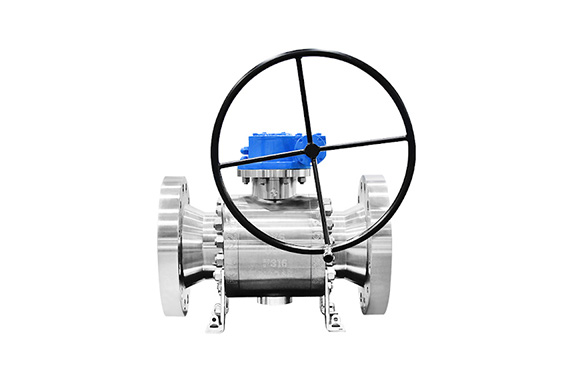
Trunnion ball valves are highly regarded for their remarkable versatility because they can be used in both small-scale and large-scale, high-pressure and low-pressure applications. These ball valves can also be utilized in a wide range of sectors, thanks to their adaptable characteristics, simplicity of use, outstanding durability, and numerous other advantages.
- Oil and gas sectors
Trunnion ball valves are ideal for a variety of applications in the oil and gas sectors. Gas feed lines, industrial gas processing plants, field gas plants, oil refinery feedstock lines, and crude oil plants are a few models of oil and gas businesses that utilize Trunnion-mounted ball valves.
- Chemical industries
Trunnion ball valves are ideal for a range of chemical sectors because they provide exceptional safety, reliability, and sealing capacities.
- Pipeline industries
Trunnion ball valves are extremely useful in the pipeline business since they can deal with a variety of applications, including handling gases, slurries, and fluids.
- Power Industries
Trunnion ball valves can be utilized in a wide range of power industry applications, including those involving turbines, generators, skids, and compressors.
- Hydrocarbon industries
Trunnion-mounted ball valves are quite common in the hydrocarbon sectors because they help make the processing of hydrocarbons easier.
Conclusion
Due to their adaptable properties, Trunnion mounted ball valves are particularly versatile and employed in a wide range of sectors. These valves are primarily employed in the LNG, petrochemical, oil and gas, and chemical industries.
For low temperature, high pressure, and large-scale applications, they are ideally suited. Does your business require a bulk quantity of Trunnion mounted ball valves for industrial purposes? In that case, make sure to contact a reliable valve manufacturer to get customized Trunnion-mounted ball valves that meet your business requirements.









